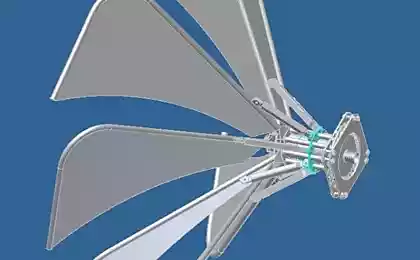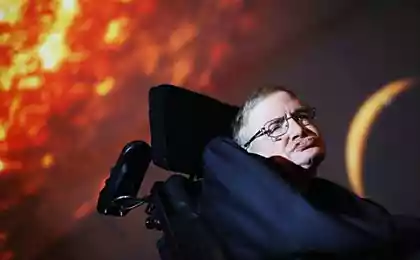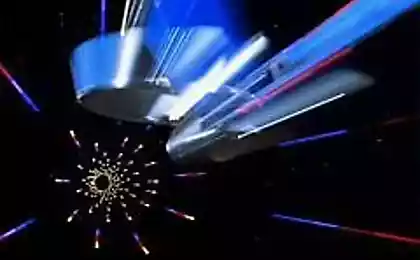1074
Do any lights if the car is moving at the speed of light?
1) Lights if the headlights and other objects is reflected back to the eye?
No. As is known, can not exceed the speed of light. This means that in one of the directions of the light can not shine at all, because it is not able to exceed the speed of the car, so it never goes out of range. However, we live in a multidimensional world and not all the light shines in the same direction.
Represent mass without dimensional vehicle (i.e. moving at the speed of light), which two photons rejected one upwards and the other downwards. The two beams are separated from the vehicle and remain behind. They move with the same speed of light, but can not move forward i> as fast as one of the velocity vectors pointing up / down, so we are ahead of them. These photons then meet on the way some obstacle, such as a road sign or a tree, and are reflected back. The problem is that they can not catch up with you. Other people walking on the sidewalk, are able to see the reflected light, but you have already left and never see him again.
Here you are, everything can be explained by the fact alone that the whole world is moving at the same speed, no matter where. It hardly has to do with the theory of relativity.
However, there is a more hardcore version.
2) Are things moving at the speed of light, have headlights? Can they all have a vision?
That's where the crazy truth relativity really comes into play, so do not be ashamed if something does not understand, but the answer comes back negative.
Perhaps you are familiar with the concept of relativistic time dilation. Suppose I sit down with a friend in a different train and go forward. Passing by, if we look through the window at the wall clock in the compartment from each other, the both i>, we note that they are slower than usual. This is not because the clock slows down, but because it comes in light between us, the faster we move, the slower the age relatively less moving objects. This is because it is not an absolute time for all objects in the universe, it is my each object, depending on its speed. Our time depends only on our i> speed in the universe. You can submit it as a movement in different directions on the scale of space-time. There are some problems, because our brain is not suited for the understanding of the geometry of space-time, and tend to represent time as absolute. However, after reading a bit of literature on this topic, you normally can be seen as a natural fact that those who move quickly relative you age slower.
In fact, one can calculate how much it slowly. If you took one second, then your friend has a very fast train one second will be
your seconds, where v - its speed, and c - the speed of light.
Suppose that your friend is sitting in a hypothetical car and rushes at the speed of light. So substitute its speed in our formula and see what the answer was.

Oh-she! It seems that he did not have passed any time! Perhaps there is something wrong with our calculations ?! It turns out that there is. Time. Do Not. There is. For. Objects. Na. Speed. Light.
It does not exist.
This means that things at the speed of light can not perceive "occurring" events in the same way as we perceive. Events can not be be i> for them. They can perform actions, but can not get experience. Einstein once said, "Time exists to everything happening at the same time» («Time exists so that everything does not happen at once»). This coordinate events designed to build a meaningful sequence, so that we can understand what is happening. But for an object that is moving at the speed of light, this principle does not work, because all i> occurs simultaneously. A traveler at the speed of light will never see, do not think and feel something that we consider meaningful.

Here's a surprising finding.
Source: geektimes.ru/post/245098/
No. As is known, can not exceed the speed of light. This means that in one of the directions of the light can not shine at all, because it is not able to exceed the speed of the car, so it never goes out of range. However, we live in a multidimensional world and not all the light shines in the same direction.
Represent mass without dimensional vehicle (i.e. moving at the speed of light), which two photons rejected one upwards and the other downwards. The two beams are separated from the vehicle and remain behind. They move with the same speed of light, but can not move forward i> as fast as one of the velocity vectors pointing up / down, so we are ahead of them. These photons then meet on the way some obstacle, such as a road sign or a tree, and are reflected back. The problem is that they can not catch up with you. Other people walking on the sidewalk, are able to see the reflected light, but you have already left and never see him again.
Here you are, everything can be explained by the fact alone that the whole world is moving at the same speed, no matter where. It hardly has to do with the theory of relativity.
However, there is a more hardcore version.
2) Are things moving at the speed of light, have headlights? Can they all have a vision?
That's where the crazy truth relativity really comes into play, so do not be ashamed if something does not understand, but the answer comes back negative.
Perhaps you are familiar with the concept of relativistic time dilation. Suppose I sit down with a friend in a different train and go forward. Passing by, if we look through the window at the wall clock in the compartment from each other, the both i>, we note that they are slower than usual. This is not because the clock slows down, but because it comes in light between us, the faster we move, the slower the age relatively less moving objects. This is because it is not an absolute time for all objects in the universe, it is my each object, depending on its speed. Our time depends only on our i> speed in the universe. You can submit it as a movement in different directions on the scale of space-time. There are some problems, because our brain is not suited for the understanding of the geometry of space-time, and tend to represent time as absolute. However, after reading a bit of literature on this topic, you normally can be seen as a natural fact that those who move quickly relative you age slower.
In fact, one can calculate how much it slowly. If you took one second, then your friend has a very fast train one second will be

your seconds, where v - its speed, and c - the speed of light.
Suppose that your friend is sitting in a hypothetical car and rushes at the speed of light. So substitute its speed in our formula and see what the answer was.

Oh-she! It seems that he did not have passed any time! Perhaps there is something wrong with our calculations ?! It turns out that there is. Time. Do Not. There is. For. Objects. Na. Speed. Light.
It does not exist.
This means that things at the speed of light can not perceive "occurring" events in the same way as we perceive. Events can not be be i> for them. They can perform actions, but can not get experience. Einstein once said, "Time exists to everything happening at the same time» («Time exists so that everything does not happen at once»). This coordinate events designed to build a meaningful sequence, so that we can understand what is happening. But for an object that is moving at the speed of light, this principle does not work, because all i> occurs simultaneously. A traveler at the speed of light will never see, do not think and feel something that we consider meaningful.

Here's a surprising finding.
Source: geektimes.ru/post/245098/























